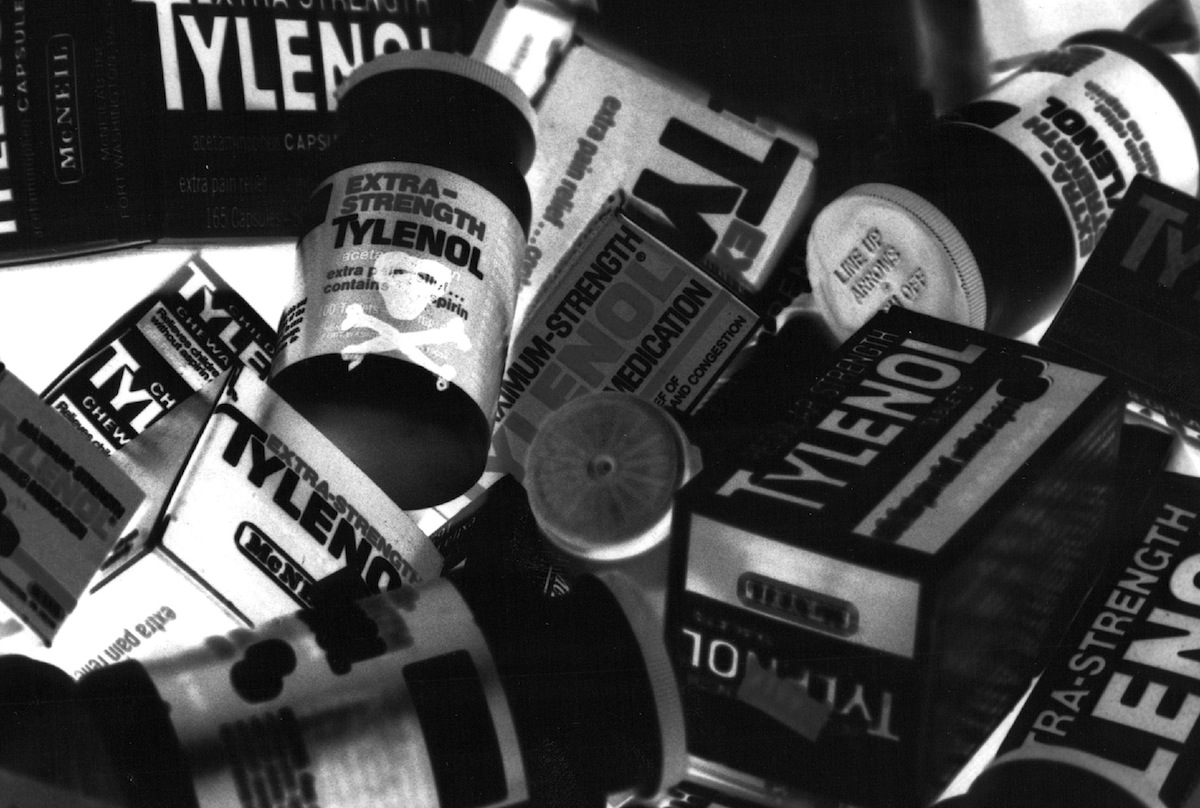
The killer’s motives remain unknown, but his — or her, or their — technical savvy is as chilling today as it was 30 years ago.
On Sept. 29, 1982, three people died in the Chicago area after taking cyanide-laced Tylenol at the outset of a poisoning spree that would claim seven lives by Oct. 1. The case has never been solved, and so the lingering question — why? — still haunts investigators.
According to TIME’s 1982 report, Food and Drug Administration officials hypothesized that the killer bought Extra-Strength Tylenol capsules over the counter, injected cyanide into the red half of the capsules, resealed the bottles, and sneaked them back onto the shelves of drug and grocery stores. The Illinois attorney general, on the other hand, suspected a disgruntled employee on Tylenol’s factory line. In either case, it was a sophisticated and ambitious undertaking with the seemingly pathological goal of killing strangers entirely at random. Their symptoms and sudden deaths confounded doctors until the link was discovered, traced back to identical pill bottles that each smelled like almonds — the telltale scent of cyanide. The perpetrator left no margin for error, filling the capsules with poison at thousands of times the amount needed to be fatal.
One victim, 27-year-old Adam Janus, took Tylenol for minor chest pain and died within hours. His younger brother and sister-in-law were killed after taking pills from the same bottle while grieving the sudden, shocking loss at Janus’ house.
TIME’s Susan Tifft wrote of the tragedy’s victims on Oct. 11, 1982:
Twelve-year-old Mary Kellerman of Elk Grove Village took Extra-Strength Tylenol to ward off a cold that had been dogging her. Mary Reiner, 27… had recently given birth to her fourth child. Paula Prince, 35, a United Airlines stewardess, was found dead in her Chicago apartment, an open bottle of Extra-Strength Tylenol near by in the bathroom. Says Dr. Kim [the chief of critical care at Northwest Community Hospital]: “The victims never had a chance. Death was certain within minutes.”
Without a suspect to revile, public outrage could have fallen squarely on Tylenol — the nation’s leading painkiller, with a market share greater than the next four top painkillers combined — and its parent corporation, Johnson & Johnson. Instead, by quickly recalling all of its products from store shelves, a move that cost Johnson & Johnson millions of dollars, the company emerged as another victim of the crime and one that put customer safety above profit. It even issued national warnings urging the public not to take Tylenol and established a hotline for worried customers to call.
Tylenol relatively quickly reestablished its brand, recovering the entire market share it lost during the cyanide scare. Though things could have gone very differently, the episode’s most lasting legacy has been in the annals of public relations, not poison control: the case has since become a model for effective corporate crisis management.
Read the 1982 report on the poisonings, here in TIME’s archives: Poison Madness in the Midwest
More Must-Reads from TIME
- How Donald Trump Won
- The Best Inventions of 2024
- Why Sleep Is the Key to Living Longer
- Robert Zemeckis Just Wants to Move You
- How to Break 8 Toxic Communication Habits
- Nicola Coughlan Bet on Herself—And Won
- Why Vinegar Is So Good for You
- Meet TIME's Newest Class of Next Generation Leaders
Contact us at letters@time.com